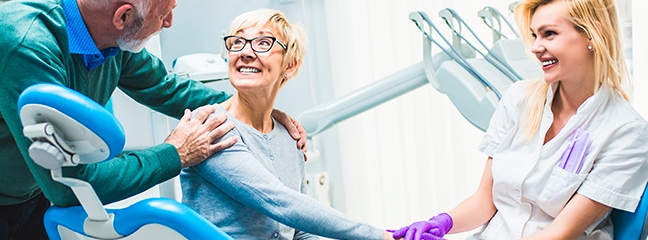The number of individuals in the US that are 65 and older has grown more than any other age group in the US. In fact, the older adult age group has had more growth than its younger populations combined! Did you know that older adults 65 years of age and older are expected to make up 24 percent of the overall population by 2060? That means 98 million people will need specialized care in all areas of the health sector. Dental care is a major piece of that. If you haven’t considered providing geriatric dental care at your practice, it’s time to start planning for a change.
Don’t worry, that doesn’t mean you need to alter everything you do. But, it does make sense to make accommodations for this unique segment of the population. Older adults require a more personalized approach to their dental care. This is because their health varies wildly: this population is made up of edentulous people, individuals on medications, and active older adults in peak physical condition. They also face challenges when it comes to affording and accessing dental care.
The American Dental Education Association claims their most significant challenge is “provid[ing] affordable, accessible, and equitable health care” to the older adult demographic.
Take these challenges into consideration. How can these concerns be addressed when it comes to dental care for older adults at your practice?
- How can we provide coverage that the geriatric audience needs at a price point that they can afford?
- How can we ensure that older adults have access to the care they need, whether in the office or off-site?
- How do we accomplish this fairly?
The answers to these questions begin with your client base.
TAKE THE TIME TO EDUCATE YOUR CLIENTS:
There is a connection between oral health and overall health. Encourage your patients to form healthy habits that they can take with them into old age. This will make things easier for patients and dentists moving forward. If the patients are maintaining good oral health, dental care will likely be cheaper. Having a healthy smile is linked to having a healthier, happier life, too.
DISCUSS CHANGES IN THEIR HEALTH AND WELLNESS:
Just like with children, older adults experience a period where they’re more susceptible to cavities and periodontal disease. Explain to your older patients what this means for their oral healthcare moving forward. Explain how untreated gum disease can lead to other diseases and complications. Keep in mind that changes in mobility or lack of independent transportation can affect a patient’s ability to properly maintain their oral health. If a patient can’t make it to your office, is there a mobile way dentists can reach them?
Older adults may also be taking new medications. Many individuals don’t realize how common a side effect dry mouth is for many prescriptions. Share samples of oral moisturizers. Familiarize your patients with how a lack of saliva can lead to cavities and complications in the mouth.
BE COGNIZANT OF COST:
As older adults leave the workforce and move into retirement, they’re often losing the benefits that they relied on to keep them healthy. This can mean a period of financial uncertainty. Trips to your office may be cast aside in favor of more “essential expenditures” like food and shelter. Think about this as you work with your patients and expand your practice. Don’t hesitate to help them in new and innovative ways when you come up with a plan.
Adjusting your practice and personal workflow to provide dental care for older adults will require more than a change in mentality. Today many individuals over 65 lack the resources to understand and care for their oral health. Your practice can make a difference. It will also take a lot of patience. Proper planning will help you succeed in providing the best care to this segment of the population, one which will have a lot of spending power.


